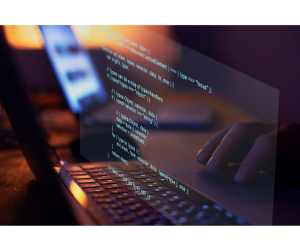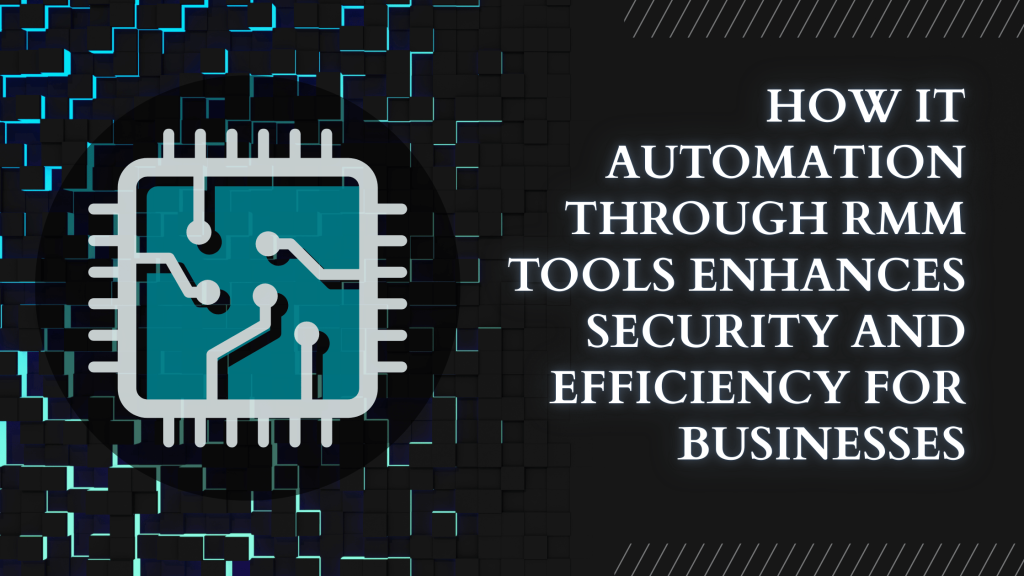IT securities are important in the cyber world. As cyber threats get more sophisticated, businesses must find ways to stay ahead of potential attacks from cyber criminals and risks while perfecting their IT operations. This is where IT automation, through Remote Monitoring and Management (RMM) tools, plays a critical role. This covers how RMM tools automate routine IT tasks, helping businesses improve and increase security and efficiency while reducing human error.
What is IT Automation in the Context of Cybersecurity?
IT automation in cybersecurity refers to the use of software and tools to automate various IT processes, such as system monitoring, security updates, patch management, and troubleshooting. The goal is to reduce manual intervention, speed up response times, and enhance security by actively addressing vulnerabilities and risks before they can be exploited by cybercriminals.
In the context of cybersecurity, IT automation makes sure that routine security tasks are done consistently, accurately, and without the risk of human oversight. Automation tools can also help find abnormal activities, respond to threats faster, and ensure that systems are always up to date with the latest security patches and configurations.
How RMM Tools Automate IT Tasks for Business
Remote Monitoring and Management (RMM) tools are designed to help IT teams manage and check systems remotely. These tools automate a wide range of IT tasks, allowing businesses to focus on their core operations rather than getting bogged down with routine IT maintenance.

Here’s how RMM tools automate key cybersecurity tasks:
Software Updates & Patch Management
RMM tools make sure that software, operating systems, and applications are updated automatically with the latest security patches. Keeping systems up to date is important to reduce vulnerabilities that could be exploited by hackers. Automation takes the guesswork out of patch management, and prompting updates without delays, reducing the risk of breaches from outdated systems.
System Diagnostics & Health Monitoring
RMM platforms check continuously on system health and performance, flagging potential issues like low disk space, outdated drivers, or performance bottlenecks. This initiative-taking monitoring helps find problems before they escalate into security risks or cause downtime. For example, if an antivirus software on an endpoint is not working correctly, an RMM tool can inform IT teams to fix the issue, preventing the system from becoming vulnerable to malware.
Remote Access & Troubleshooting
RMM tools allow IT professionals to remotely access and troubleshoot devices and systems, making sure that problems are resolved quickly and efficiently. Remote support reduces the time needed for IT teams to respond to issues, preventing prolonged exposure to threats. By resolving technical problems remotely, IT teams can also reduce the risk of human error during manual interventions.
Backup & Data Recovery Automation
RMM tools can automate regular backups of critical data, ensuring that businesses have up-to-date copies of their information in case of a disaster. Automated backup systems reduce the chances of data loss from ransomware attacks or accidental deletions from employees or anyone with access to the data. If an attacked businesses can quickly restore their systems to a known good state without experiencing prolonged downtime.
Security Risks That Can Be Prevented Through Automation
By automating routine IT tasks, businesses can significantly reduce the likelihood of security breaches caused by human error. Here are some specific security risks that RMM tools can help prevent:
- Missed Security Patches: Human error can lead to missed security patches, leaving systems vulnerable to exploitation. Automated patch management ensures that patches are applied consistently and promptly, preventing hackers from exploiting known vulnerabilities.
- Inconsistent Backups: Manual backups are prone to errors and can often be neglected, leaving businesses without a reliable recovery choice in case of a cyberattack. Automated backups ensure that businesses have up-to-date copies of their critical data, making recovery faster and less risky.
- Delayed Detection of Anomalies: Without automated monitoring, anomalies in network traffic or system behaviour may go unnoticed, allowing threats to go undetected. RMM tools provide continuous monitoring, alerting IT teams to potential security issues before they become significant problems.
- Inefficient Incident Response: In traditional IT environments, incident response can be slow and inconsistent, leading to greater damage from cyberattacks. Automation tools enable faster, more efficient responses to security incidents, limiting the damage caused by threats.

How Businesses Can Integrate RMM into Their IT Strategy
Integrating RMM tools into an organisation’s IT strategy can improve security and operational efficiency. Here are a few steps businesses can take to implement RMM effectively:
- Choose the Right RMM Tool Not all RMM tools are created equal. Businesses should select a tool that fits their specific needs and offers the features necessary to enhance security. Key considerations include scalability, ease of use, integration with existing systems, and the ability to automate crucial tasks like patch management and backup.
- Align RMM with Security Policies It is important that RMM tools are aligned with the company’s overall security policies. Ensure that automated tasks, such as updates and system scans, are in line with the business’s security protocols. For example, if your organisation enforces multi-factor authentication (MFA), ensure that the RMM tool supports this feature for remote access.
- Regularly Review & Update Automation Settings As the business grows, so does its IT needs. Regularly review the automation settings and configurations of your RMM tools to ensure they are still relevant and effective. Automation should evolve to meet the changing security landscape and business requirements.
- Train IT Staff & End Users While RMM tools automate many processes, IT staff must still be trained to use the tool effectively. Training should include understanding how RMM tools work, how to respond to alerts, and how to fine-tune automation settings. Additionally, educating end users about cybersecurity best practices can help reduce the chances of human error.
- Monitor and Adjust for Maximum Efficiency Once RMM tools are integrated, businesses should continuously check their performance to ensure they are running at peak efficiency. Regular analysis can help find areas for improvement, ensuring that the business gets the most out of its automation strategy.
Incorporating IT automation through RMM tools is a meaningful change for businesses seeking to enhance their cybersecurity and improve operational efficiency. By automating routine tasks such as software updates, patch management, and system monitoring, businesses can reduce the risk of human error, mitigate potential security threats, and ensure their systems are always up-to-date and secure. As cyber threats continue to evolve, businesses must embrace automation as a critical part of their IT strategy to stay one step ahead and protect their valuable assets.
Are you ready to leverage RMM tools to improve your business’s security and efficiency? Start integrating automation into your IT strategy today for a safer and more streamlined future.
Ready to take the next step? Book a free call and let’s talk about how we can help you grow.




